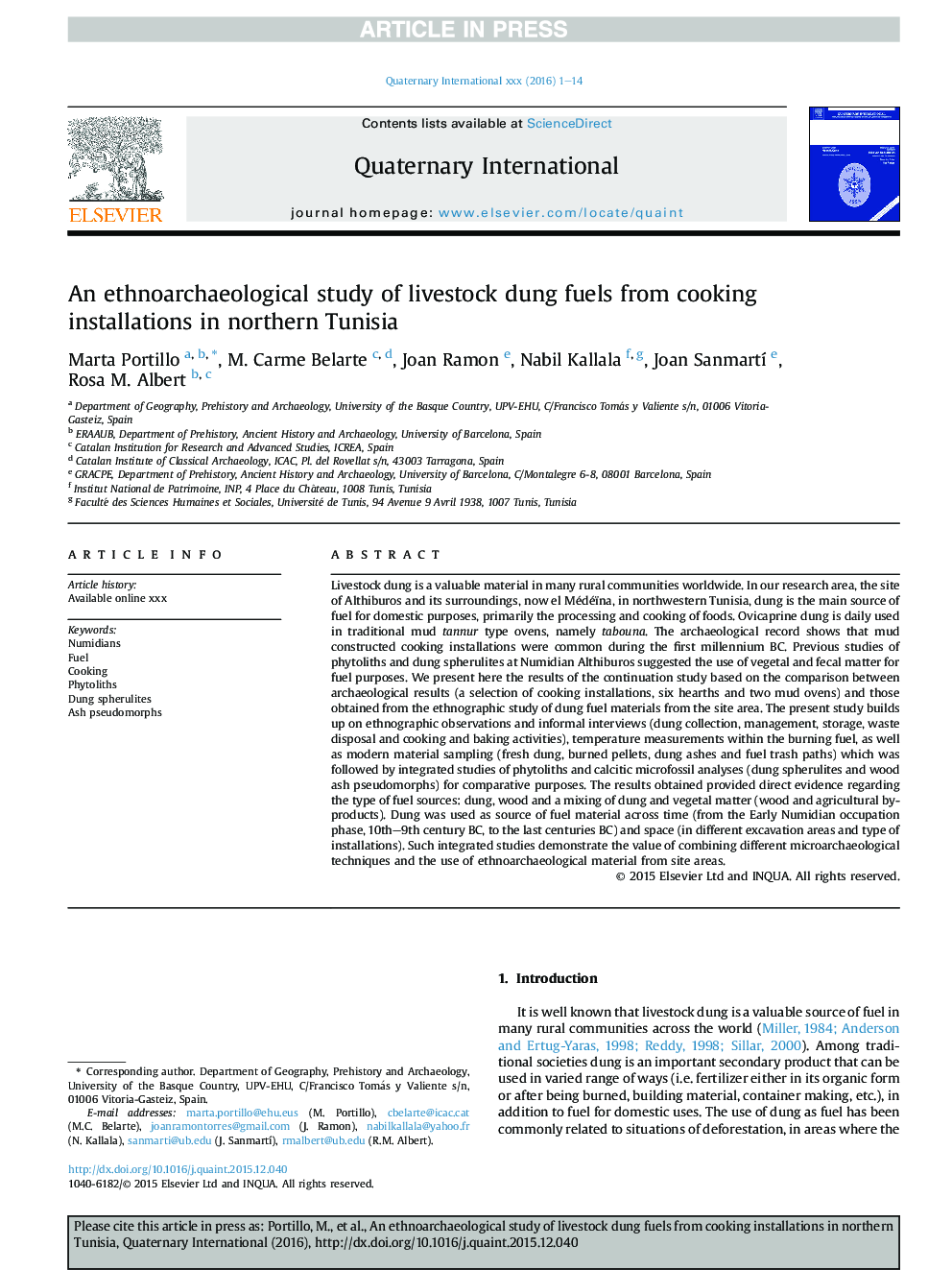| کد مقاله | کد نشریه | سال انتشار | مقاله انگلیسی | نسخه تمام متن |
|---|---|---|---|---|
| 5113827 | 1377953 | 2017 | 14 صفحه PDF | دانلود رایگان |
عنوان انگلیسی مقاله ISI
An ethnoarchaeological study of livestock dung fuels from cooking installations in northern Tunisia
ترجمه فارسی عنوان
یک مطالعه قوم شناسی شناختی از سوخت های دام گاو از تاسیسات پخت و پز در شمال تونس
دانلود مقاله + سفارش ترجمه
دانلود مقاله ISI انگلیسی
رایگان برای ایرانیان
کلمات کلیدی
موضوعات مرتبط
مهندسی و علوم پایه
علوم زمین و سیارات
زمین شناسی
چکیده انگلیسی
Livestock dung is a valuable material in many rural communities worldwide. In our research area, the site of Althiburos and its surroundings, now el Médéïna, in northwestern Tunisia, dung is the main source of fuel for domestic purposes, primarily the processing and cooking of foods. Ovicaprine dung is daily used in traditional mud tannur type ovens, namely tabouna. The archaeological record shows that mud constructed cooking installations were common during the first millennium BC. Previous studies of phytoliths and dung spherulites at Numidian Althiburos suggested the use of vegetal and fecal matter for fuel purposes. We present here the results of the continuation study based on the comparison between archaeological results (a selection of cooking installations, six hearths and two mud ovens) and those obtained from the ethnographic study of dung fuel materials from the site area. The present study builds up on ethnographic observations and informal interviews (dung collection, management, storage, waste disposal and cooking and baking activities), temperature measurements within the burning fuel, as well as modern material sampling (fresh dung, burned pellets, dung ashes and fuel trash paths) which was followed by integrated studies of phytoliths and calcitic microfossil analyses (dung spherulites and wood ash pseudomorphs) for comparative purposes. The results obtained provided direct evidence regarding the type of fuel sources: dung, wood and a mixing of dung and vegetal matter (wood and agricultural by-products). Dung was used as source of fuel material across time (from the Early Numidian occupation phase, 10th-9th century BC, to the last centuries BC) and space (in different excavation areas and type of installations). Such integrated studies demonstrate the value of combining different microarchaeological techniques and the use of ethnoarchaeological material from site areas.
ناشر
Database: Elsevier - ScienceDirect (ساینس دایرکت)
Journal: Quaternary International - Volume 431, Part A, 28 February 2017, Pages 131-144
Journal: Quaternary International - Volume 431, Part A, 28 February 2017, Pages 131-144
نویسندگان
Marta Portillo, M. Carme Belarte, Joan Ramon, Nabil Kallala, Joan SanmartÃ, Rosa M. Albert,
